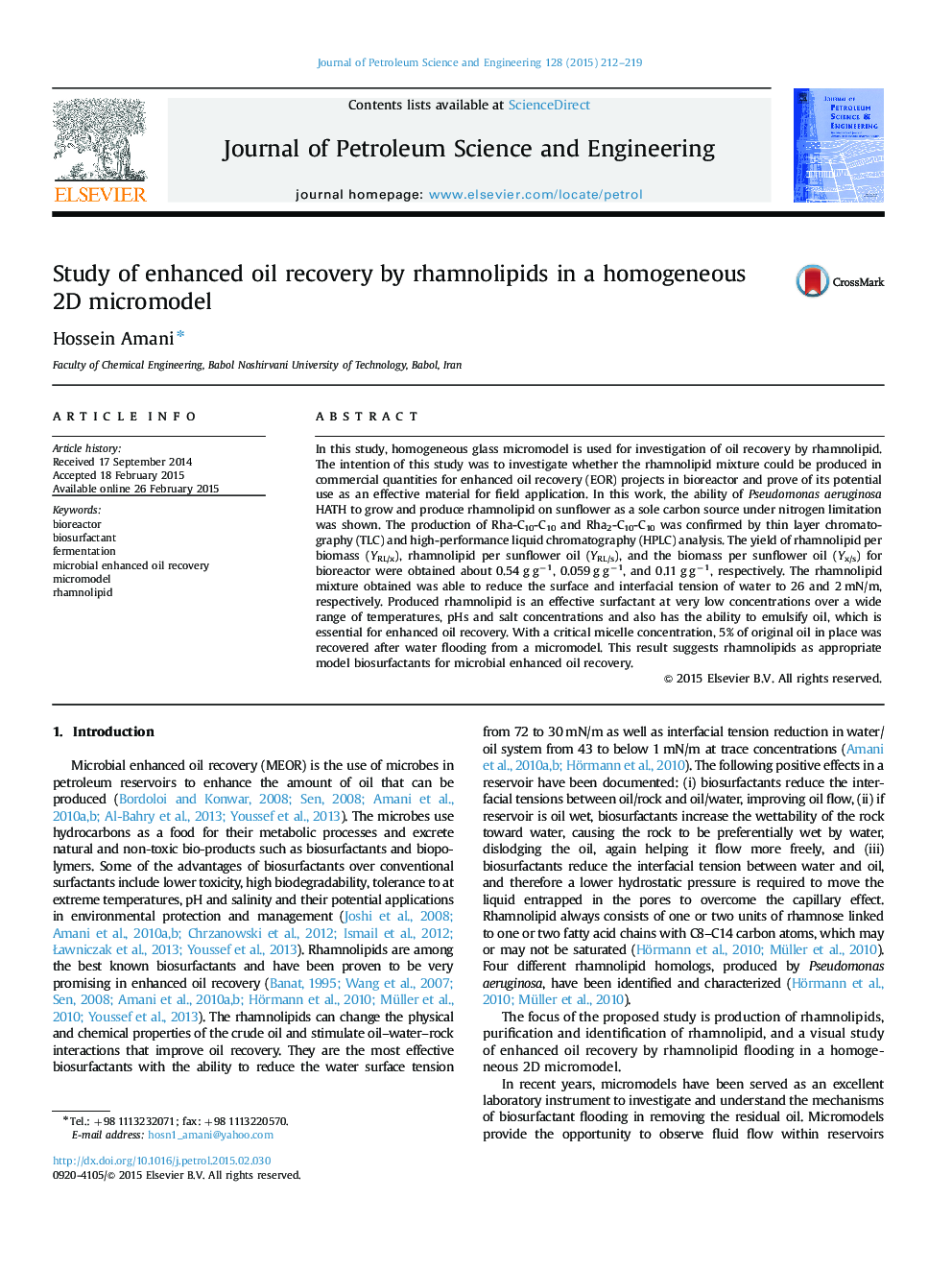| کد مقاله | کد نشریه | سال انتشار | مقاله انگلیسی | نسخه تمام متن |
|---|---|---|---|---|
| 1754803 | 1522813 | 2015 | 8 صفحه PDF | دانلود رایگان |
• Rhamnolipid production and growth characteristics of P. aeruginosa HATH using sunflower oil as substrates were studied.
• I showed a visual study of enhanced oil recovery by rhamnolipid flooding in a homogeneous 2D micromodel.
• 5% of residual oil was recovered using this rhamnolipid.
• This work was demonstration of successfulness of use of rhamnolipids for industrial applications, especially in MEOR.
In this study, homogeneous glass micromodel is used for investigation of oil recovery by rhamnolipid. The intention of this study was to investigate whether the rhamnolipid mixture could be produced in commercial quantities for enhanced oil recovery (EOR) projects in bioreactor and prove of its potential use as an effective material for field application. In this work, the ability of Pseudomonas aeruginosa HATH to grow and produce rhamnolipid on sunflower as a sole carbon source under nitrogen limitation was shown. The production of Rha-C10-C10 and Rha2-C10-C10 was confirmed by thin layer chromatography (TLC) and high-performance liquid chromatography (HPLC) analysis. The yield of rhamnolipid per biomass (YRL/x), rhamnolipid per sunflower oil (YRL/s), and the biomass per sunflower oil (Yx/s) for bioreactor were obtained about 0.54 g g−1, 0.059 g g−1, and 0.11 g g−1, respectively. The rhamnolipid mixture obtained was able to reduce the surface and interfacial tension of water to 26 and 2 mN/m, respectively. Produced rhamnolipid is an effective surfactant at very low concentrations over a wide range of temperatures, pHs and salt concentrations and also has the ability to emulsify oil, which is essential for enhanced oil recovery. With a critical micelle concentration, 5% of original oil in place was recovered after water flooding from a micromodel. This result suggests rhamnolipids as appropriate model biosurfactants for microbial enhanced oil recovery.
Figure optionsDownload as PowerPoint slide
Journal: Journal of Petroleum Science and Engineering - Volume 128, April 2015, Pages 212–219
